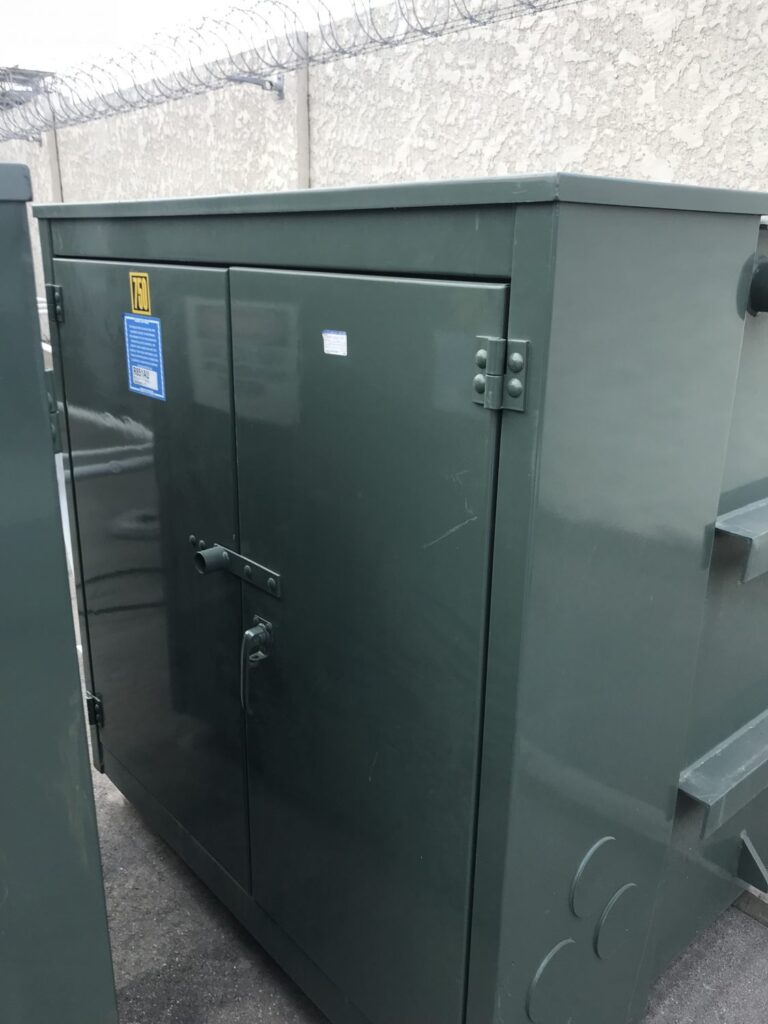Make Money via Transformer Recycling Near Santa Ana
Call (951) 733-6603 | Electrical Surplus Buyers
The huge money making side of industrial recycling, Transformer Recycling Near Santa Ana stands as big time cash bringer, offering both environmental benefits and financial opportunities. Transformers, essential in electrical power distribution, are treasure troves of recyclable materials such as copper, steel, and aluminum. At Electrical Surplus Buyers, we specialize in Transformer Recycling Near Santa Ana, while providing a service that is not only environmentally responsible but also pays top dollar cash. We take pride on offering fair and competitive cash payouts for recycled transformers or Transformer Disposal whether new or used, ensuring that our clients receive the best value for their surplus transformers.
The Process and Benefits of Transformer Recycling Near Santa Ana
The process of recycling transformers involves several critical stages, beginning with the safe dismantling and removal of the transformer. This step is crucial, particularly for larger transformers that may contain hazardous materials. Once dismantled, the transformer’s components are carefully segregated. Valuable metals like copper and aluminum are extracted and sent to recycling facilities where they are processed and reused in various industries. This recycling process plays a significant role in resource conservation, reducing the need for mining and processing virgin materials, thereby minimizing the environmental impact.

Get Paid Top Dollar for Transformer Recycling Near Santa Ana
Call (951) 733-6603 | Sell Surplus Transformers
Our approach to Transformer Recycling Near Santa Ana is grounded in sustainability and compliance with environmental regulations. We ensure that all materials are handled safely and responsibly, with a focus on minimizing any potential environmental harm. By recycling transformers, we not only prevent the release of hazardous substances into the environment but also contribute to the circular economy. This process supports environmental initiatives and offers a sustainable alternative to disposing of old or malfunctioning transformers in landfills.
Call Us For Your Free Cash Quote on Transformer Recycling Near Santa Ana
If you have transformers that are no longer in service or are being replaced, our company is here to offer a viable and lucrative recycling solution as well as Transformer Disposal Services. We understand the value of the materials contained within transformers and are committed to providing fair compensation for these resources.

Looking for the Best Transformer Recycling Near Santa Ana?
Call (951) 733-6603 | We Buy Transformers New or Used
We invite you to contact us with your Transformer Recycling and Transformer Disposal needs. Our team of experts will assess your transformers and offer a competitive price, ensuring that you receive a fair market value. Choosing our services means opting for a responsible and financially rewarding way to dispose of your transformers. Reach out to us today to discuss how we can assist you in transforming your old transformers into a profitable and environmentally friendly opportunity. Let’s work together towards a more sustainable and resource-efficient future.
